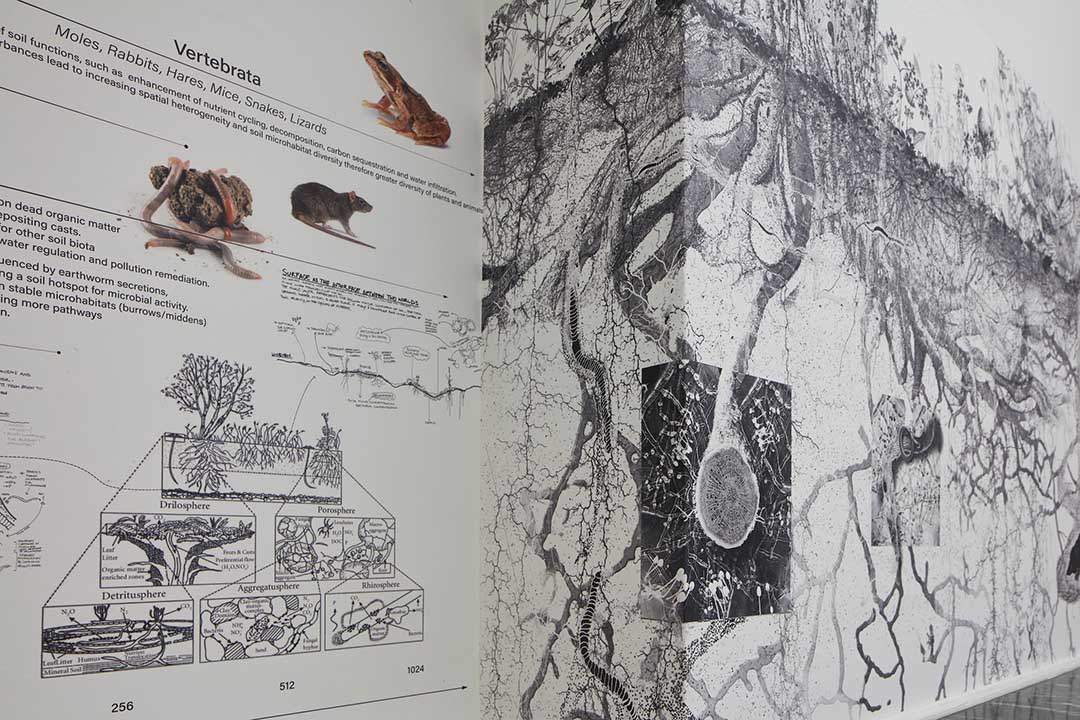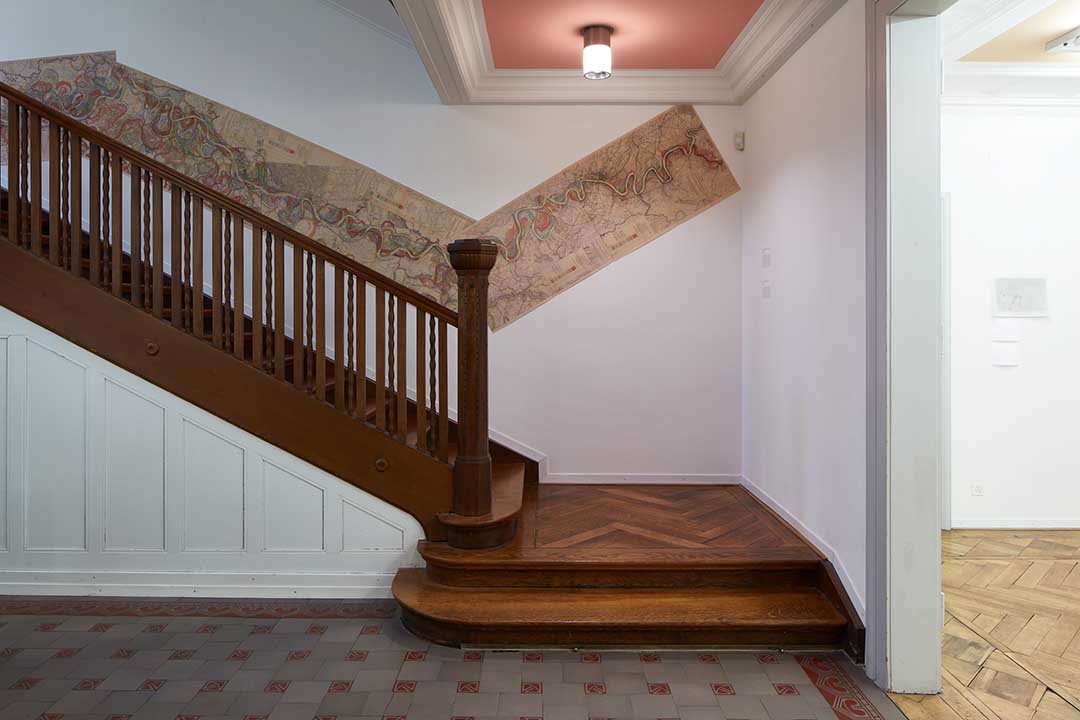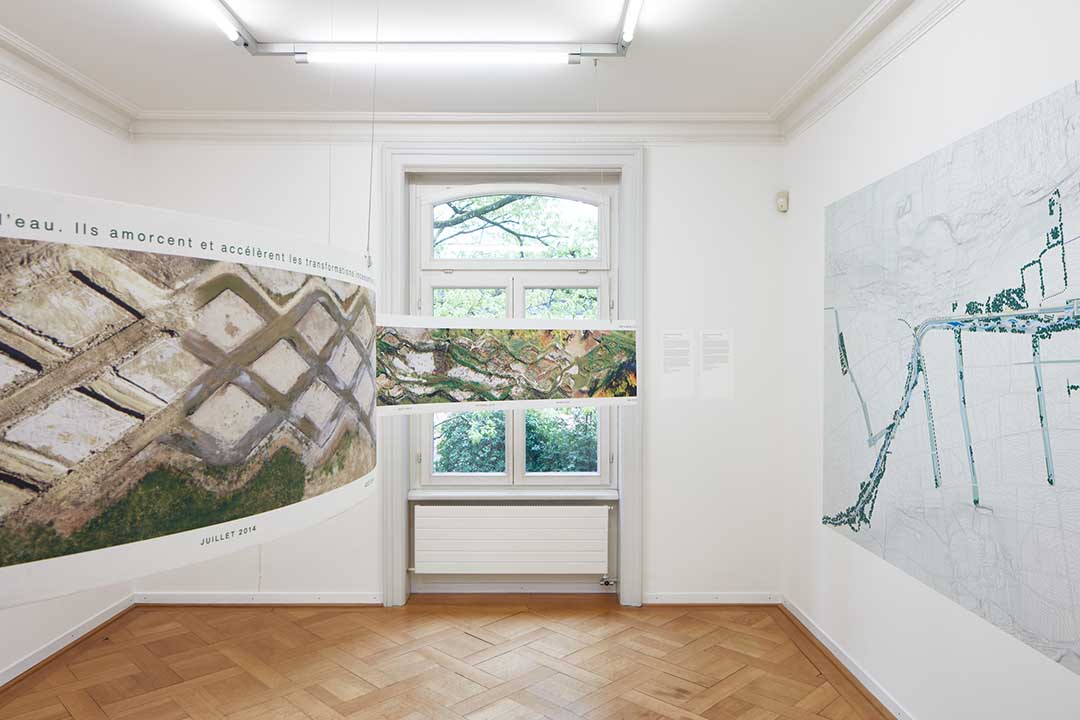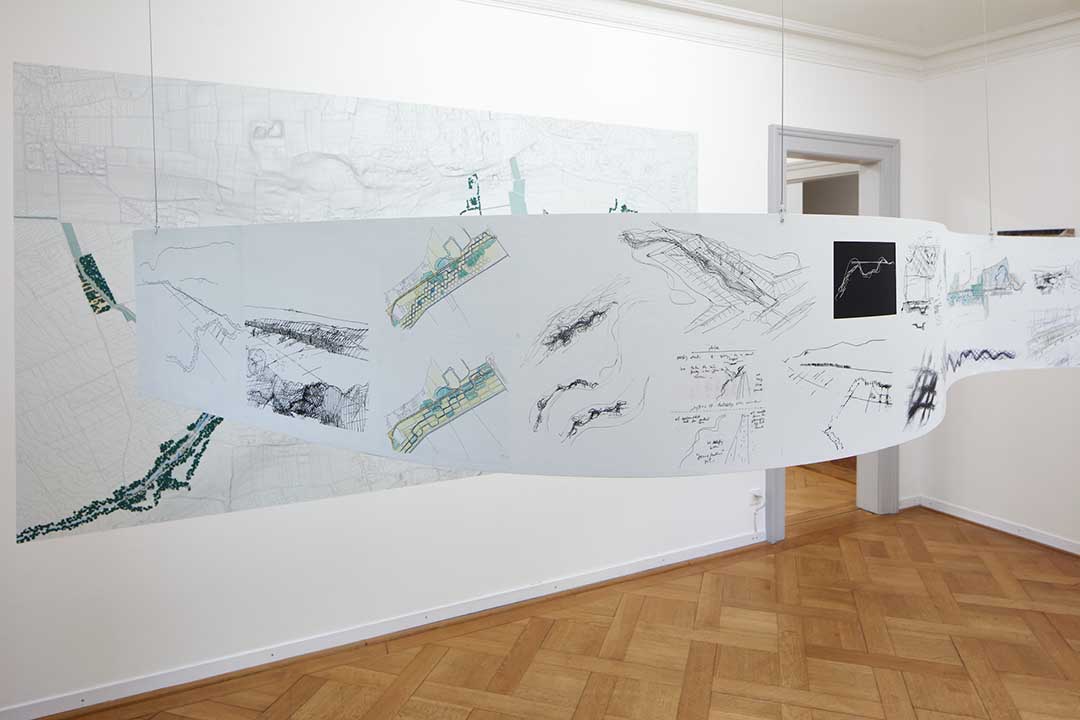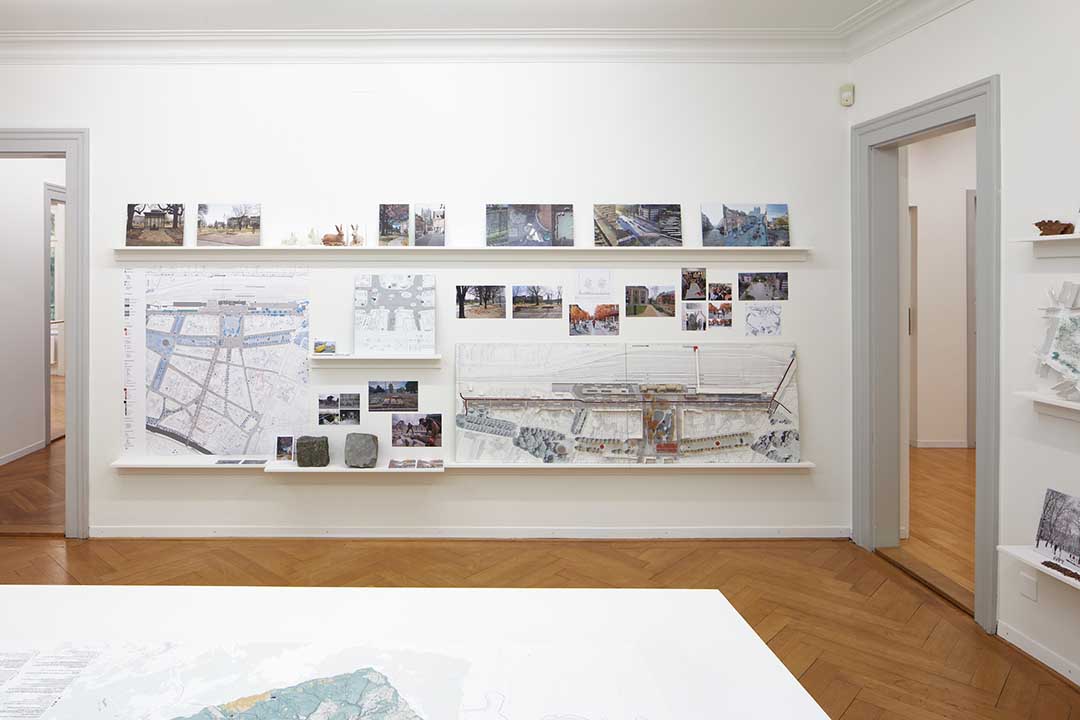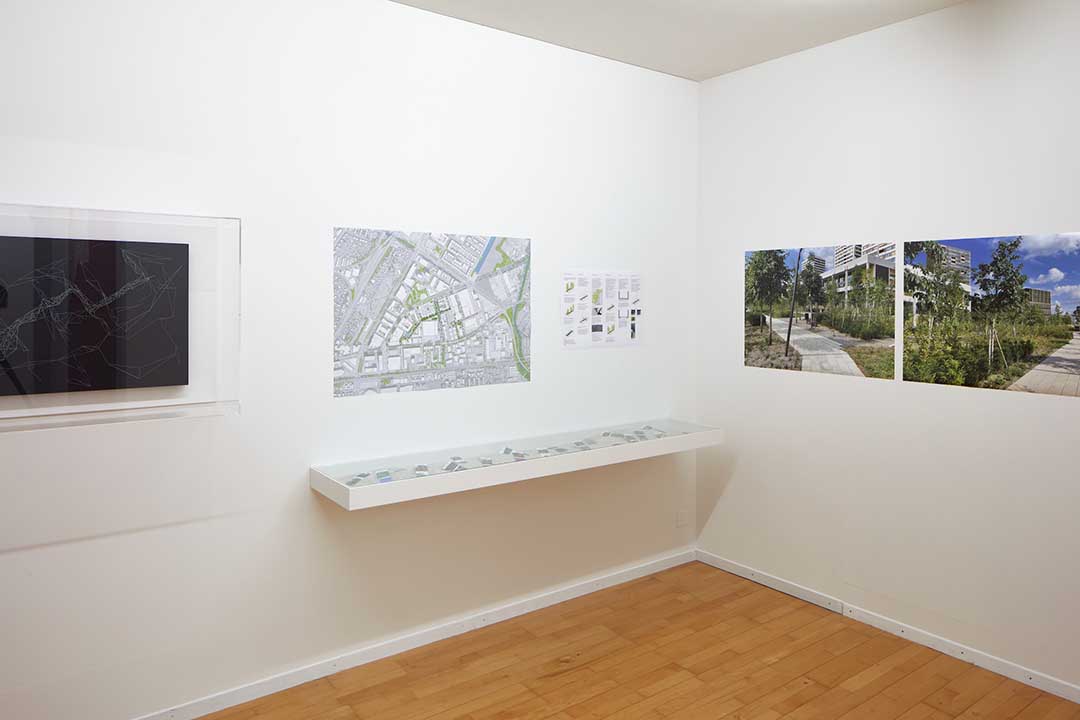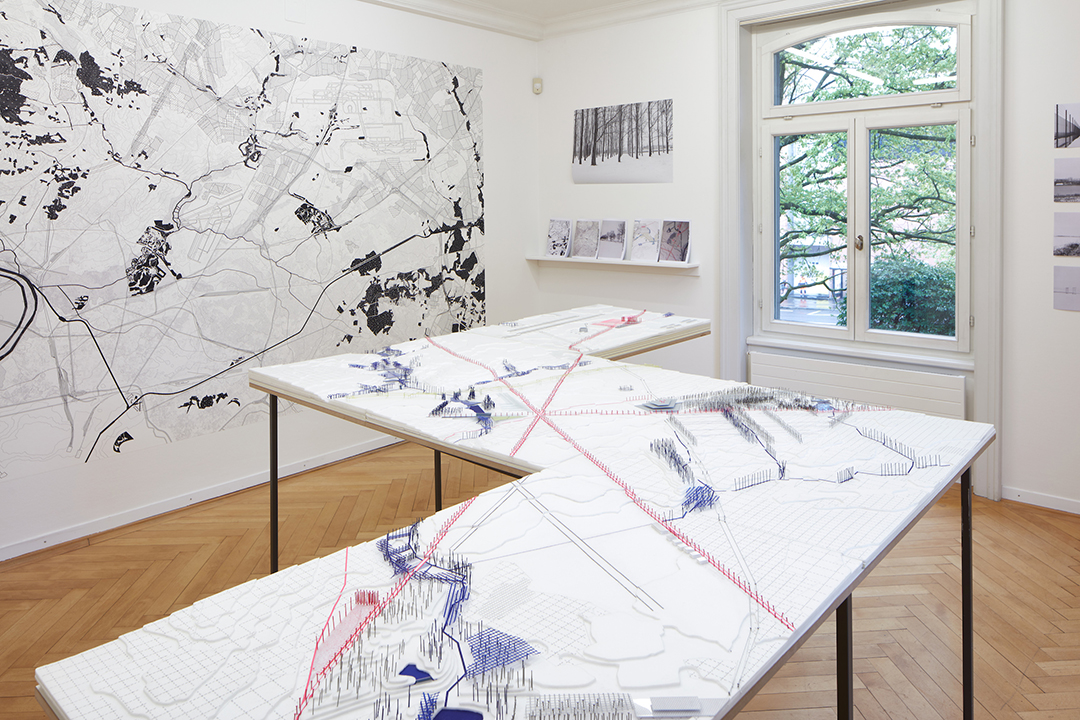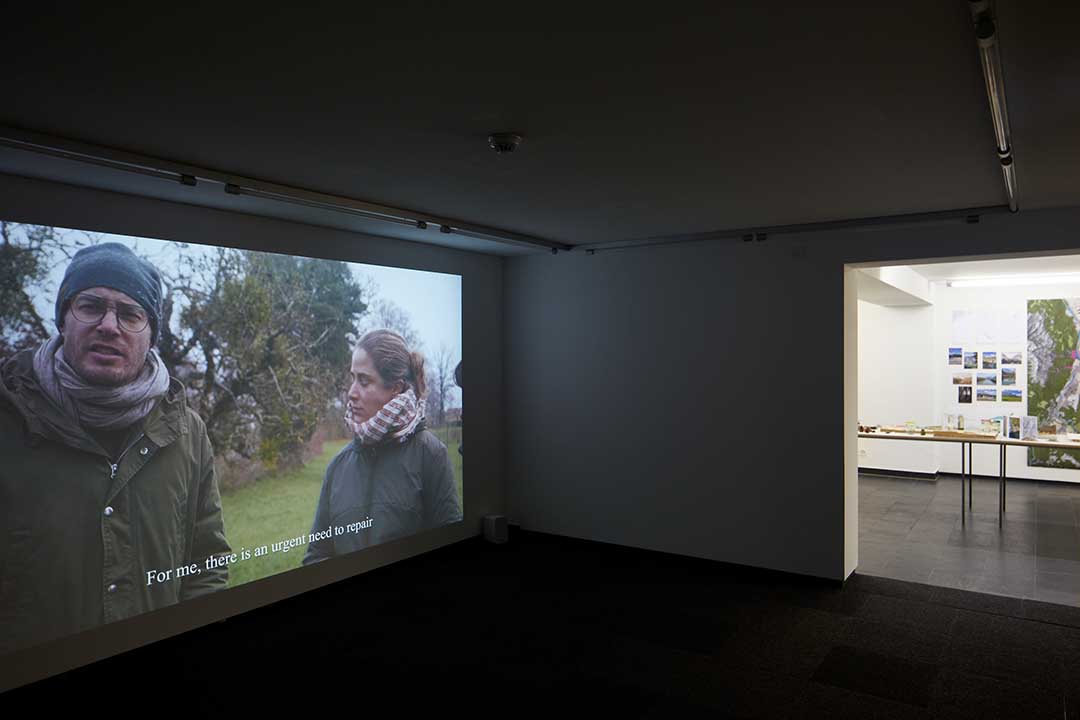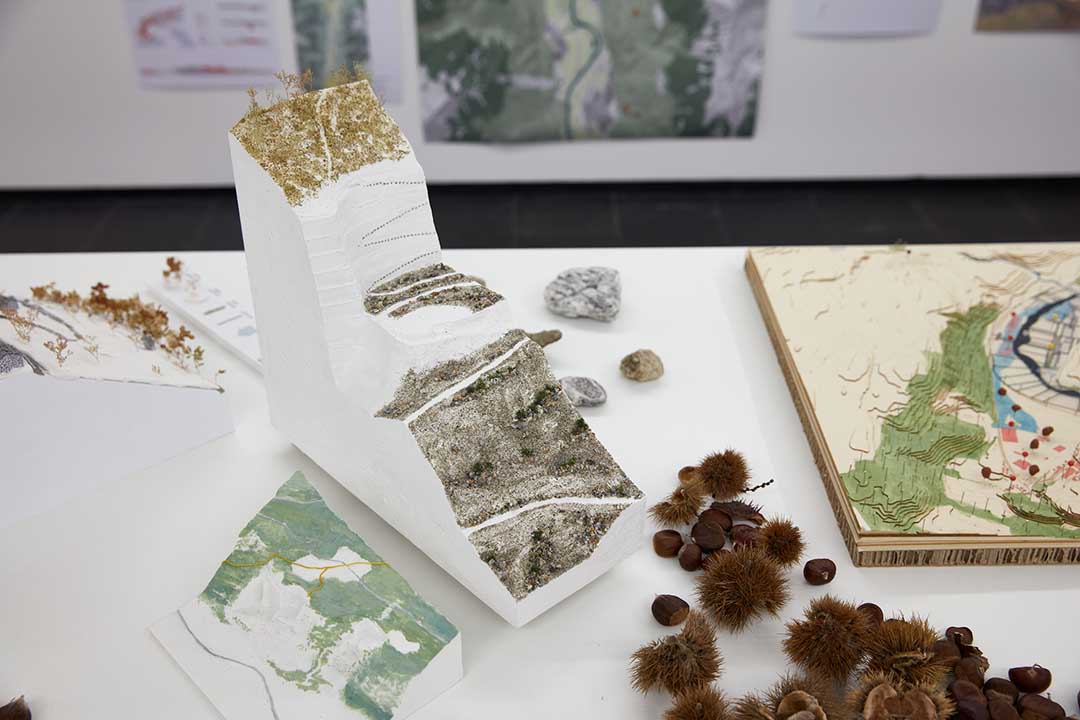Ramification
The show displays the work of selected contemporary European landscape architects and urbanists who are working at territorial scale to develop network of open spaces, striving to create bridges between otherwise disconnected ecologies and territories.
| Location | Kriens, Switzerland |
| Time Frame | 2024 |
| Client | Museum im Bellpark |
| Commission Type | Curation |
ENG Plants usually expand through a process of ramification, forming branching structures that become increasingly thinner and more intricate as they grow. A tree, for instance, subdivides its aerial structure into branches and twigs in order to extend its foliage efficiently. This botanical process also manifests itself at the scale of the landscape; such as in the case of a watershed, where small tributaries flow into increasingly wide rivers before reaching the sea. In the process of gradual ramification, systems react sensitively to given environmental conditions and incorporate those that favour their growth while neglecting those that do not. As part of such complex systems, landscape architects must explore how they can intervene to manipulate the natural conditions in such a way that the desired changes are brought about. This exhibition brings together the work of landscape architects, urbanists, biologists and students from various backgrounds and generations, who are – consciously or unconsciously – drawing on the metaphor of ramification within their practice. Their work exemplifies how the understanding of natural processes allows beneficial relationships with our natural environment to be cultivated. They demonstrate the possibility, and furthermore, our responsibility, to accommodate life within damaged territories in order to shape resilient ecosystems.
DE Pflanzen wachsen in der Regel durch den natürlichen Vorgang der Verästelung (Ramification), d. h. sie bilden Strukturen aus, die sich verzweigen und mit zunehmender Ausdehnung immer feiner und komplexer werden. Ein Baum beispielsweise unterteilt seine oberirdische Struktur in Äste und Zweige, um sein Blattwerk effizient zu erweitern. Dieser botanische Prozess zeigt sich auch auf der Ebene von Landschaften, zum Beispiel in einem Wassereinzugsgebiet, wo kleine Nebengewässer in immer größere Flüsse münden, bevor sie das Meer erreichen. Im Prozess fortschreitender Verästelungen reagieren die Systeme sensibel auf gegebene Umweltbedingungen und inkorporieren diejenigen, die ihrem Wachstum entgegenkommen, während andere vernachlässigt werden. Als Teil solcher komplexen Systeme müssen auch Landschaftsarchitekt*innen herausfinden, mit welchen Eingriffen sie die Bedingungen so manipulieren können, dass die gewünschten Veränderungen herbeigeführt werden. Die Ausstellung zeigt Arbeiten von Landschaftsarchitektinnen, Stadtplanerinnen, Biolog*innen und Studierenden verschiedener Herkunft und Generationen, die – bewusst oder unbewusst – die Metapher der Verzweigung in ihre Arbeit einbeziehen. Ihre Praxis macht anschaulich, wie das Verständnis natürlicher Prozesse es ermöglicht, vorteilhafte Beziehungen zu unserer natürlichen Umwelt zu kultivieren. Sie illustrieren die Möglichkeit und darüber hinaus die Verantwortung, auch in geschädigten Gebieten eine lebendige Vielfalt zu ermöglichen, um widerstandsfähige Ökosysteme zu schaffen.
Contributors: Altitude 35; Chair of Being Alive, ETHZ; Inside Outside, Petra Blaisse; Studio Paola Viganò; Superpositions, Georges Descombes, Atelier ADR; Sylvie Viollier, Cyril Verrier, La Frontière; mavo Landschaften and the students of Studio Rhizomes.
Curation: Céline Baumann with the support of Myriam Treiber
Photography: SIK-ISEA, Martin Stollenwerk, courtesy of Museum im Bellpark Kriens, 2024
→ Read the review in the Hochparterre by Maarit Ströbele, 2024 (German)
→ Read the review in the werkbauenwohnen by Rolan Züger, 2024 (German)
→ Read the review in the Luzerner Zeitung by Susanne Holz, 2024 (German)



